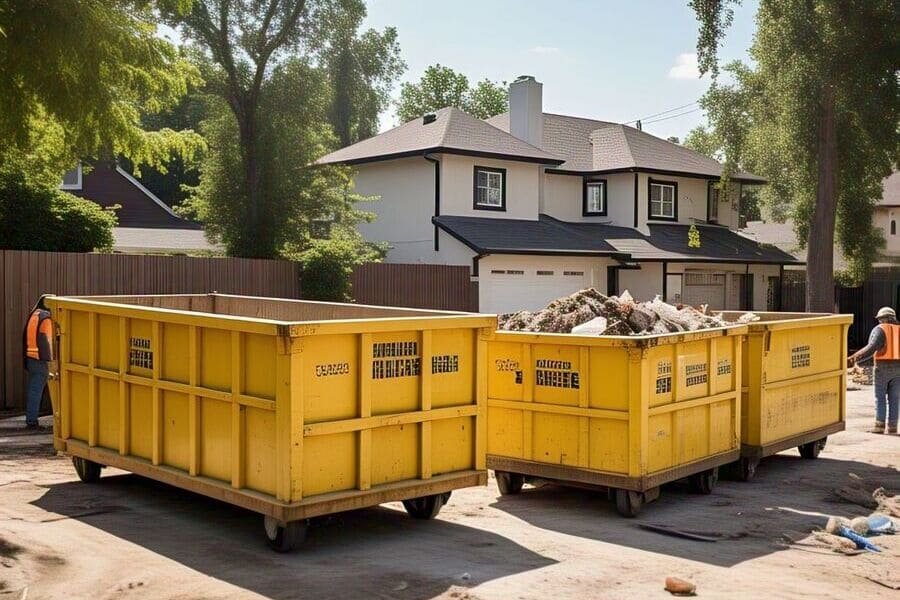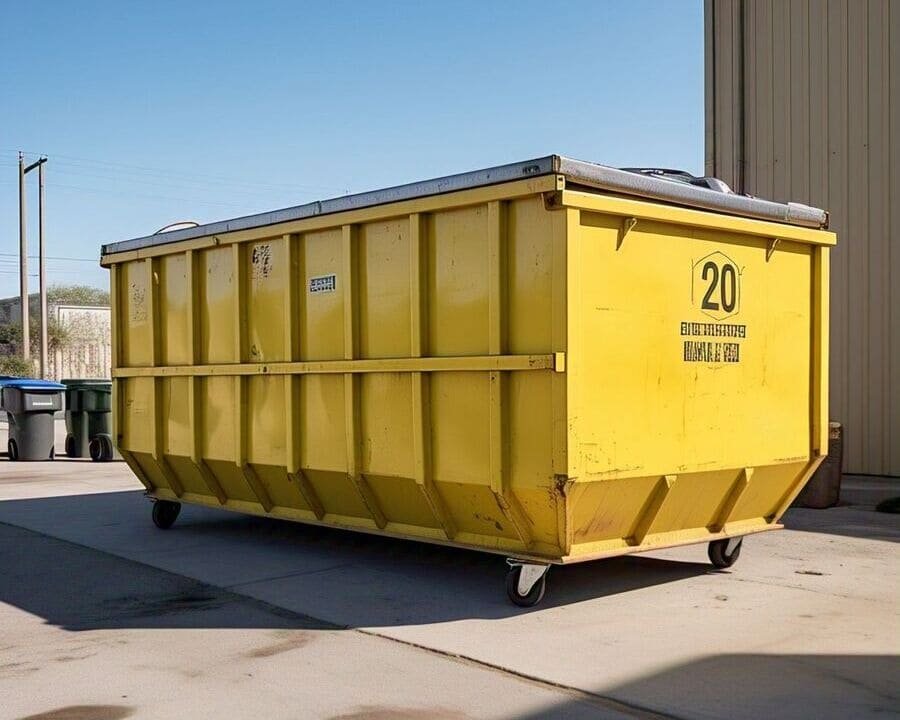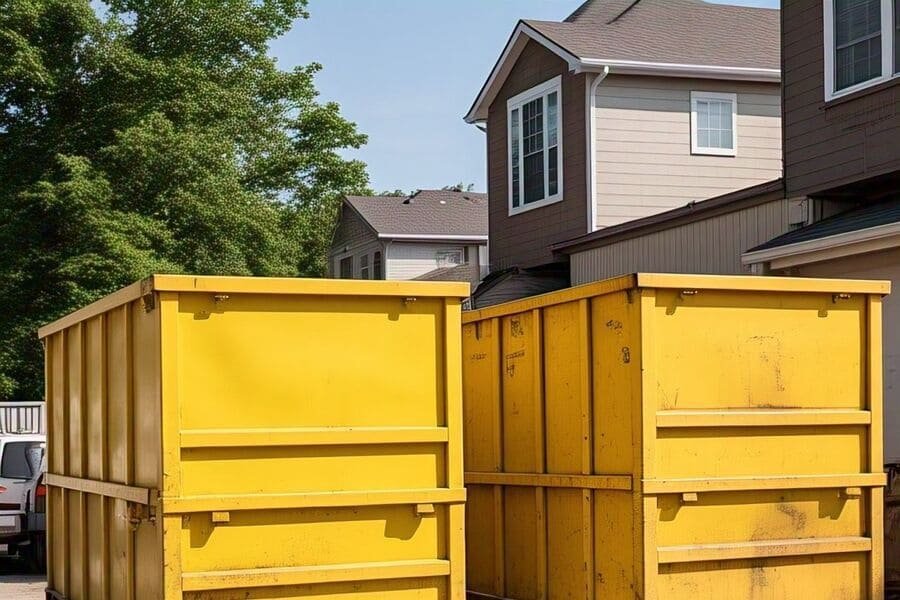Renting a dumpster can be the perfect solution when you’re clearing out a lot of junk or doing a big renovation. But choosing the right dumpster size? That’s a whole different ballgame. Choose too small, and you’ll end up scrambling for extra space. Choose too big, and you’re wasting money on a dumpster you don’t need.
So, how do you pick the right size dumpster for your project? Good news. It’s easier than you think. By understanding your project and the dumpster sizes available, you can make the right choice and avoid extra costs. Let’s break it down.
Step 1: Understand the Project
Before you think about dumpster sizes, you need to understand the scope of your project. What are you throwing away? How much stuff do you need to get rid of? The more you know about your project, the easier it’ll be to choose the right dumpster size.
Ask yourself these questions:
- Are you cleaning out your home, garage, or basement?
- Are you renovating or remodeling your kitchen or bathroom?
- Are you doing a large construction project?
- Do you have a lot of yard waste to dispose of?
The type of project will determine how much waste you generate. Whether it’s a big cleanout or a small renovation, understanding what’s going in the dumpster is key.

Step 2: Know Your Dumpster Size Options
Now that you know what you’re dealing with, it’s time to figure out what size dumpster will fit your needs. Dumpster sizes are usually measured in cubic yards, which is a bit tricky to visualize. So let’s break it down with simple examples.
Here are the most common dumpster sizes you’ll encounter:
- 10-yard dumpster – About the size of a small car.
- 20-yard dumpster – A little bigger than a 10-yard but still compact.
- 30-yard dumpster – Great for larger cleanouts or remodels.
- 40-yard dumpster – Massive! Typically used for huge construction or demolition jobs.
So, how do these sizes compare?
Let’s go through them.
10-Yard Dumpster: The Small Space Saver
This is the smallest size dumpster you can rent. A 10-yard dumpster can hold about 3 pickup truck loads of debris. Think of it like your everyday small cleanup. Maybe you’re doing a basement or garage cleanout, or you’re tackling a small remodeling project.
When to choose a 10-yard dumpster:
- Small home cleanouts (attic, garage, or basement).
- Minor renovations (bathroom remodel or kitchen demo).
- Yard waste disposal (small tree branches, bushes, and lawn clippings).
- General junk removal (old furniture, appliances, or boxes of junk).
The good news? It’s compact, so it can fit in tight spaces like driveways. No extra parking hassles!
20-Yard Dumpster: The Middle Ground
The 20-yard dumpster is the workhorse of dumpster rentals. It’s big enough to handle medium-sized projects but not too big to be overkill. A 20-yard dumpster holds about 6 pickup truck loads of debris. It’s perfect if you’re dealing with a bit more waste than a 10-yard dumpster can handle.
When to choose a 20-yard dumpster:
- Mid-sized home cleanouts (entire garage or whole house).
- Major home renovations (kitchen or bathroom remodels).
- Roof replacements (tearing off shingles and roofing materials).
- Large yard cleanups (bigger tree removal, fence demolition, etc.).
If you’re doing a larger home project or a big cleanout, the 20-yard dumpster is usually just the right size. It’s not too big or too small.
30-Yard Dumpster: The Big Guy
This size is for larger projects. A 30-yard dumpster can hold about 9 pickup truck loads of debris. It’s often used for big home renovation jobs or commercial cleanup projects.
When to choose a 30-yard dumpster:
- Large home renovations (whole-house remodels, kitchen or bathroom rebuilds).
- Large construction projects (major demolition or home additions).
- Big cleanouts (estate cleanout, moving out of a large home).
- Commercial cleanups (large office, building, or commercial space).
Think of it as the middle linebacker of dumpsters. It’s big, but not the biggest, and it handles the heavy lifting.
40-Yard Dumpster: The Beast
This is the biggest dumpster you can rent. A 40-yard dumpster holds about 12 pickup truck loads of debris. It’s typically used for massive projects, like construction or demolition work.
When to choose a 40-yard dumpster:
- Major construction and demolition projects (large building tear-downs, big construction sites).
- Large office or warehouse cleanouts.
- Extensive home renovations (gutting an entire house, tearing down walls).
A 40-yard dumpster is HUGE. You probably won’t need it unless you’re handling a massive amount of waste.
Step 3: Estimate How Much Junk You Have
Now that you know the size options, it’s time to get realistic about how much stuff you need to throw away. It’s all about estimating. You don’t need to count every box, but getting a rough idea will help you avoid choosing the wrong dumpster size.
Here’s a quick way to estimate:
- Visualize the debris: Think about how many pickup truck loads your project will create. A truck bed holds about 2 cubic yards. So, if you’re doing a garage cleanout and it feels like it’s about 6 truck loads, you probably need a 20-yard dumpster.
- Measure your space: If you’re doing a demolition or big renovation, look at the rooms or areas you’re working on. Consider how much material will be removed. Big jobs like tearing down drywall or pulling up flooring create a lot of waste.
Quick reference:
- 10-yard dumpster: Equivalent to 3 truckloads.
- 20-yard dumpster: Equivalent to 6 truckloads.
- 30-yard dumpster: Equivalent to 9 truckloads.
- 40-yard dumpster: Equivalent to 12 truckloads.
Step 4: Know What You’re Throwing Away
Different materials take up different amounts of space in a dumpster. For example, drywall or concrete can be very heavy, but it doesn’t take up much space. Yard waste, on the other hand, is bulky but lightweight. You need to know the type of waste you’re dealing with to make the best choice.
Here’s how the type of material affects your dumpster size:
- Heavy materials (concrete, dirt, roofing materials): These materials take up less space, but they’re heavy. If you’re throwing away heavy materials, you might need a larger dumpster for the weight, even if the amount of debris isn’t that high.
- Light and bulky materials (furniture, yard waste, old clothes): These materials take up more space but weigh less. A smaller dumpster might be enough for bulky items, but you’ll need to be mindful of filling it up quickly.
Step 5: Avoid Overfilling
When you rent a dumpster, there’s usually a weight limit as well as a size limit. If you overfill the dumpster, or if the waste sticks out over the top, the dumpster company might charge you extra fees or refuse to pick it up.
Here’s how to avoid overfilling:
- Pack the dumpster efficiently. Load heavy items first and break down large materials to make room.
- Don’t overfill. Keep debris below the top edge of the dumpster.
- Stay within weight limits. If you have heavy materials, double-check with the rental company to ensure the weight of your debris won’t exceed the limit.
Step 6: Consider the Dumpster Rental Cost
Dumpster rental costs depend on the size, the weight of your waste, and the rental period. A larger dumpster costs more to rent, but you’ll save time and money if it’s the right size for your project. Renting a dumpster that’s too small can lead to having to order another one, which can get expensive.
Cost factors include:
- Size: Bigger dumpsters cost more.
- Weight: Heavier dumpsters may lead to extra fees.
- Rental period: Longer rentals usually come with extra fees.
Make sure you know the total cost before you order the dumpster.
Step 7: Call Your Dumpster Rental Company
Now that you have a good idea of the size you need, it’s time to call the rental company. Discuss your project with them and ask for their advice on the best size for your needs. They have experience and can help you make the right choice.
Final Thoughts
Choosing the right dumpster size doesn’t have to be stressful. By understanding the scope of your project, knowing the different dumpster sizes, and estimating your waste, you can easily pick the right size for your job.
Quick recap:
- 10-yard dumpster: Small cleanouts, light renovations.
- 20-yard dumpster: Medium cleanouts, home remodels.
- 30-yard dumpster: Large renovations, construction.
- 40-yard dumpster: Huge construction or demolition projects.
And remember—if you’re unsure, always call your rental company for guidance. They’ll help you avoid overestimating or underestimating your needs.
Ready to rent your dumpster? Let’s get started!


